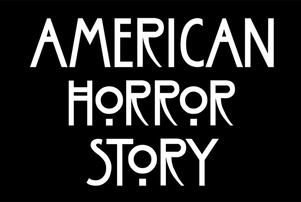
At last year’s CinemaCon, the exhibition and distribution community were up in arms over Sean Parker and Prem Akkaraju’s Screening Room pitch to bring movies into the home simultaneously with theatrical.

Shutterstock
Among the verbal naysayers were filmmakers James Cameron, Todd Phillips, and Nicolas Winding Refn, and even Warner Bros. Chairman/CEO Kevin Tsujihara who seemed to be on exhibitors’ side regarding the concept: “I assure you we are not going to let a third party or middle man come between us…We will explore them with each of you.”
As CinemaCon kicks off today, many major studio chiefs have changed their tune about a high-priced video-on-demand window following theatrical 30 to 45 days after release, Tsujihara being one of the loudest proponents. Others looking to grow the film revenue pie and respond to the younger generation’s ferocious appetite for immediate content on their digital devices include 20th Century Fox chairman/CEO Stacey Snider, 21st Century Fox CEO James Murdoch, and Universal chairman Jeff Shell.
And so, a collision continues between exhibitors looking to preserve their brick and mortar businesses, and the studios watching their sister TV companies grow nimbler through distribution technologies.
Meanwhile, The Screening Room, which has yet to sign any exhibitors or distributors, isn’t giving up and closing shop, rather taking meetings this week at the Las Vegas confab. They’ve invested too much, and yearn to be a part of the windows conversation with their desktop PVOD box.
Can the studios and exhibitors find a way to push the movie business forward without destroying the sanctity of the theatrical experience?

Disney
After the domestic box office broke a record for the second consecutive year with $11.4 billion, it’s poised to do so again with current ticket sales through March 26 at $2.8 billion, +6% over the same period a year ago. March already clocked $1 billion, and there’s a heavy franchise summer ahead with Guardians of the Galaxy, Vol. 2, Alien: Covenant, and Wonder Woman topped off by Star Wars: The Last Jedi in December. Meanwhile, Digital Entertainment Group shows that VOD and electronic sell through revenue has exploded by 71% since 2011 with 2016 raking in $4.1B. And it’s that money that the Writers Guild of America is fighting for their fair share of now.
Should the majority of studios realize their vision for PVOD, which by the way Disney is not a proponent of, one side of this revenue window is going to get hurt. The majors’ ultimate goal here is to realize revenue during ‘the dark zone’, that is the time when a film comes off the screen and remains in limbo before it surfaces in homes.
The urban myth feared by many is that if the per title rental price in the PVOD window drops down to $20, consumers will ultimately realize that it’s cheaper to watch a movie at home then in cinemas, forgoing costs that come with a night out, i.e. babysitter, parking, dinner, etc. Some studio executives claim their talks with exhibition over PVOD aren’t contentious, but many insiders say that both parties’ working relationship is best described as ‘frien-enemies’.
Says one distribution veteran, “Exhibitors are freaking out. They can’t make money unless they grow their companies and it’s hard to build these $40M multiplexes. If you have your investors hearing about windows closings, what incentive is there for them to hold onto their stocks?”
The former executive adds that PVOD, if not managed properly, could cause “a slowdown in exhibitions’ luxury seat remodeling and force the mom and pop theaters out of business.” Some also forecast that the domestic supply will shrink, that moviegoing will be relegated to tentpoles with mid-to low-budget fare relegated to in-home streaming.
However, these are doomsday theories, and there’s some positive evidence that the majors aren’t going to cannibalize their own business. Here they are:

AP
The Theatrical Window Will Be Protected: “The last thing studios would want to do is threaten that lucrative revenue stream by encroaching on the theatrical window,” says Tony Wible, Media & Entertainment Senior Analyst at Drexel Hamilton, “theatrical plays a role in pricing the TV licenses for films, and there’s an incentive for studios to maintain the theatrical window.” LA film czar Ken Ziffren also spoke about how vital TV deals are in the windows equation at UCLA Law School’s 41st annual Entertainment symposium.
Wible also asserts, “Exhibition is in a better position now, then they’ve ever been, and theaters will favor studios who don’t have shortened windows.” In fact the thinking is that the major chains would stron garm the studios for a higher share of pics’ grosses. In addition, studios have a bigger headache to deal with before they start throwing titles on PVOD: Directors’ egos. Given the huge budgets, and blood, sweat and tears they put in a movie, the last thing they want to hear is that their movie will have a better life in homes and phones than theaters.
Despite Their Bullishness, Studios Haven’t Figured Out a PVOD Formula Yet: There’s buzz that Warner Bros. will come to terms on a PVOD solution 4Q or 1Q 2018, but they’re not going to act alone in the marketplace without another studio. In addition, there are too many moving parts to the PVOD equation, and the whole notion of it goes beyond the Monday morning haggling between a distributor and exhibitor to hold a film on screens. Other windows like electronic sell-through will be impacted, and that’s another discussion studios need to have with digital partners like iTunes and Vudu.
The biggest hurdle preventing PVOD from becoming a reality is whether exhibition gets a cut of the gross, and there are some distributors who believe they should not. And if exhibition gets a cut, how can it be determined how much a title lost to PVOD due to a shortened theatrical run? We explored the details of this issue during the fall. Many believe that the initial launch of PVOD will only include titles that bombed at the B.O., and if that’s the case, there isn’t any upside for exhibition, nor is there any incentive for the consumer to spend $30. If they do get a cut of the pie, it’s a “10% of nothing is nothing scenario,” says one East Coast-based distributor.
Which raises the question: Is there really a lot of money to be made in PVOD? “If there was so much money being left on the table, the studios would have figured out this extra window fast enough. Believe me, it’s an incremental amount of money we’re talking about at the end of the day,” shouts one distribution czar who points to how long the majors have been deliberating the issue. Warner Bros. and Fox can tell the press that they’re flirting with $30 priced rentals, and ‘x’ amount of days from theatrical, but the reality is that each film is priced and negotiated on different terms. A studio is going to segue a Get Out or Hidden Figures to the home market slower than say a flop like CHIPS.
Says Wible “Studios don’t move in unison, they couldn’t agree on a 90-day window for RedBox or Ultraviolet. There’s a lack of consensus.”
If PVOD Becomes A Reality, It Will Face Its Own Challenges: Home consumers have already committed their $30 to cable bundles, Netflix, Hulu and Amazon Prime. When it comes to content in the home, they have way too much of it, not to mention VOD menus are already crowded. So, where’s the incentive to rent one title for $30?
“If you have a $30 VOD product, it’s going to be too expensive for the home consumer when it’s priced against these services,” says Wible, “There’s a value trade-off.”

iPic
In addition, exhibition claims that in-home streaming services aren’t their direct competition. According to Alamo Drafthouse and Neon label chief Tim League, “Theaters are more in competition with restaurants and comedy clubs and the types of entertainment that gets you out of the house”
Currently, exhibitors like Regal, Cinemark, and AMC are barreling forward with luxury modeling and food/alcohol amenities, and these efforts have led to increased capacity and B.O. revenue upticks, with increased cash-on-cash returns.

Lionsgate/Summit
Mid-and-Low Budget Movies Can Remain In The Theatrical Space: Some have screamed that economically budgeted fare doesn’t have a chance going forward in an event-driven theatrical marketplace, but the success of Get Out, Split, Hidden Figures, John Wick: Chapter 2 and even La La Land have proved otherwise; that’s all about how a studio positions and sells a film. “There’s not a clear delineating line of what is meant for theatrical and what’s intended for streaming,” says Amazon’s distribution and marketing chief Bob Berney. Whether a mid-budget or indie film winds up on streaming or theatrical has a lot to do with a film’s financiers, and when there’s a company like Netflix willing to pony up big bucks for the smaller screen, money talks. In addition, mid-level and low budget films “need to be event-ized” says Berney. Whether they thrive on the big screen boils down to several factors, i.e. a distributors’ passion for the film, how far they’re willing to go with it, a pic’s critical and festival reactions. Not to mention, as long as there are Oscars, there will be smart, upscale specialty movies on the big screen.
Adds League, “As both a distributor and an exhibitor we try to model out the finances of the movies across all platforms. If it feels from the data that a movie will perform quite well on premium VOD and struggle theatrically, then we do what’s best to service the film.”
Which leads us to our last point:
Moving up Electronic Sell-Through/Rental Window: “That’s really what will likely happen coming out of these PVOD talks,” acknowledges one major studio distribution…

